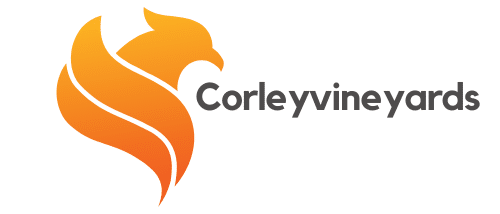How Can UK Educational Institutions Implement Virtual Reality in Classrooms?

The dawn of the 21st century has ushered in an era where technology plays a critical role in the learning experience. In the United Kingdom, schools are continuously looking for ways to enhance the educational process. One exciting opportunity lies in the application of Virtual Reality (VR). This technology holds vast potential for transforming classrooms into immersive learning environments. But how exactly can educational institutions in the UK implement VR in classrooms? This article will explore the possibilities.
1. Understanding the Concept of Virtual Reality in Education
Before delving into the implementation of VR in schools, it’s essential to understand what this technology entails. Virtual Reality is a computer-generated environment that can simulate physical presence in real or imagined worlds. It allows the user to interact in that world, providing an immersive experience.
Dans le meme genre : How to Establish a Data-Driven Culture in UK Small to Medium-Sized Companies?
In education, VR can constitute a revolutionary change. It can enable students to engage in experiential learning, where they learn by doing. For example, a student learning about the solar system could don a VR headset and feel like they’re walking on the moon or Mars, a far cry from looking at pictures in a textbook.
2. Procuring the Necessary Equipment
With a clear understanding of what VR is and its potential, the next step is procuring the necessary equipment. The primary piece of equipment is the VR headset. These headsets can range from inexpensive Google Cardboard viewers, which work with a smartphone, to high-end models like the Oculus Rift and HTC Vive, which require a powerful computer to operate.
Avez-vous vu cela : What Are the Best Practices for Creating Accessible Websites for UK Online Retailers?
When selecting VR headsets, schools need to consider their budget, the age and number of students, and the educational content they plan to use. Some companies even offer educational discounts or grant programs to help schools afford these devices. Therefore, technology procurement should not be a barrier to VR implementation.
3. Providing Appropriate Training and Development for Teachers
Even with the right equipment, successful implementation of VR in classrooms largely depends on the teachers. Teachers need to be trained to use VR tools effectively. This involves understanding the technology, knowing how to operate the VR equipment, and learning how to integrate VR experiences into their teaching.
Professional development courses, workshops, and online training can equip teachers with the necessary skills. They will learn about the role of VR in education, how to create VR content, and how to handle technical issues that may arise.
4. Integrating Virtual Reality into the Curriculum
Once teachers are comfortable with the technology, the next step is integrating VR into the curriculum. This can be done in a variety of ways. For instance, in science lessons, students can use VR to explore the human body, delve into complex chemical structures, or examine the ecosystems of different habitats.
In history classes, students can visit ancient civilizations or pivotal events in history. VR can also be used in language classes, where students can engage in virtual conversations with native speakers. The key is finding ways to integrate VR that supplement and enhance the existing curriculum.
5. Evaluating the Impact and Making Necessary Adjustments
The final step in implementing VR in classrooms is evaluating its impact. Schools need to monitor and assess how the use of VR is affecting student learning and engagement. Are students more engaged? Are they understanding and retaining information better?
Feedback from both students and teachers is essential in this process. This feedback will help identify what is working and what needs adjustment. It will also provide insights into how VR can be better utilized in the future.
The use of Virtual Reality in education signals exciting times ahead for students in the UK. As classrooms transform into immersive learning environments, students are bound to engage in learning like never before. By understanding the technology, procuring the right equipment, training teachers, integrating VR into the curriculum, and evaluating its impact, educational institutions in the UK can effectively implement VR in classrooms.
6. Augmenting Traditional Field Trips with Virtual Reality
Traditionally, field trips have been an integral part of the educational system. They facilitate experiential learning – learning by direct experience and observation. With VR, the scope of these trips can be significantly expanded. Instead of being limited by geographical and logistical constraints, students can take virtual field trips to any location globally, and even beyond!
Virtual field trips can offer students an immersive experience that isn’t possible with traditional methods. With VR, students can explore the depths of the ocean, the vastness of space, or the intricacies of a bustling metropolis – all without leaving their classrooms. This can help students understand concepts better as they see them in real life scenarios, enhancing their learning experience.
Moreover, VR can also be used to recreate historical events or scenarios, providing students with a vivid, first-hand experience of the event. This can greatly help in capturing the attention of the students, engaging them more effectively, and making learning more fun and interactive.
However, it’s important to remember that virtual field trips should not entirely replace traditional ones. They should be used to augment them, providing experiences that are otherwise not feasible. This way, students get the best of both worlds – the hands-on learning from traditional field trips and the immersive experiences from virtual ones.
7. Developing Customised Virtual Reality Content
The success of integrating VR in classrooms heavily depends on the quality and relevance of the VR content. As VR in education continues to grow, so does the need for more educational VR content. Many companies and app development agencies have begun producing VR educational content, but there’s still a significant need for customised content.
With advancements in software development, educators now have the resources to create custom VR content tailored to their curriculum. This can help students learn better as the content aligns with what they’re already learning in their classes. In addition, students can also be engaged in the content creation process, which can enhance their understanding and interest in the subject.
Most importantly, creating customised content allows educators to design experiences that cater to different learning styles. For example, kinesthetic learners – those who learn best through movement and physical activity – can greatly benefit from VR as it can provide them with a platform to learn by doing.
However, developing customised content requires a significant investment in terms of time and resources. Therefore, it’s crucial for educational institutions to plan this out strategically, ensuring that the benefits outweigh the costs.
Conclusion
The potential of Virtual Reality (VR) in education is vast. From providing immersive field trips to developing customised content, VR offers a world of possibilities for enhancing the learning experience. As educational institutions across the UK explore the ways to implement VR, it’s clear that the future of education is very exciting.
However, it’s also essential to remember that VR is not a magic solution that will solve all educational challenges. It is a tool that, when used correctly and strategically, can greatly enhance teaching and learning. Hence, proper planning, regular evaluation, and ongoing professional development are key to successfully implementing VR in classrooms. The ultimate goal is not just to integrate technology for the sake of it, but to use it as a means to help students learn better, engage more, and prepare for the future.
